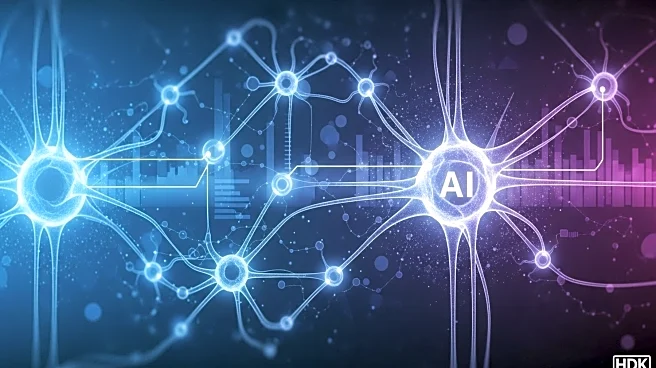What is the story about?
What's Happening?
Researchers have developed a unified representation and scoring framework for anomaly detection in attributed networks, emphasizing structural consistency and attribute integrity. The framework involves constructing a multi-order structural proximity matrix to capture local and global node relations, followed by dual attribute-structure fusion using Graph Convolutional Networks (GCNs). A consensus matrix is formed by combining structural and attribute similarities, refined through contrastive learning to enhance anomaly detection capabilities. The final step involves calculating anomaly scores based on community consistency and similarity deviation, allowing for accurate detection of both structural and attribute anomalies.
Why It's Important?
This framework offers a robust approach to anomaly detection in complex networks, which is crucial for industries relying on network data, such as cybersecurity, finance, and telecommunications. By integrating multi-order relationships and attribute fusion, the framework improves the accuracy of detecting anomalies, which can help prevent fraud, enhance security measures, and optimize network performance. The ability to detect both local and global anomalies provides a comprehensive solution for monitoring network integrity and ensuring data reliability.
What's Next?
The researchers aim to refine the framework for practical applications, focusing on scalability and efficiency in real-world network environments. As the framework is adopted by industries, it could lead to advancements in anomaly detection technologies, improving the security and reliability of network systems. Further research may explore the integration of additional data sources and machine learning techniques to enhance detection capabilities.
Beyond the Headlines
The framework's emphasis on structural consistency and attribute integrity highlights the importance of holistic approaches in network analysis. By considering both structural and attribute anomalies, the framework provides a more nuanced understanding of network behavior, which could lead to new insights in data science and network theory. The use of contrastive learning to refine embeddings represents a significant advancement in machine learning applications for network analysis.
AI Generated Content
Do you find this article useful?













